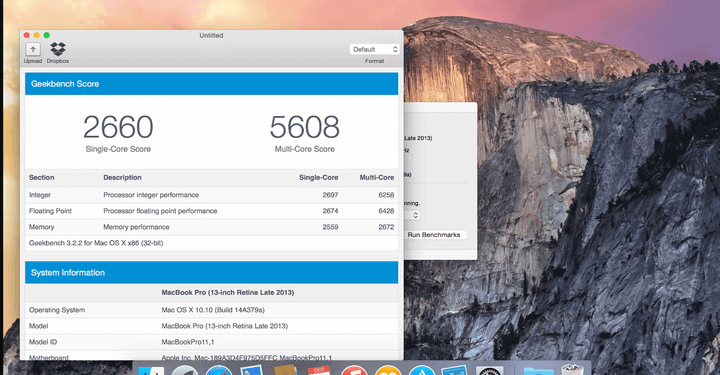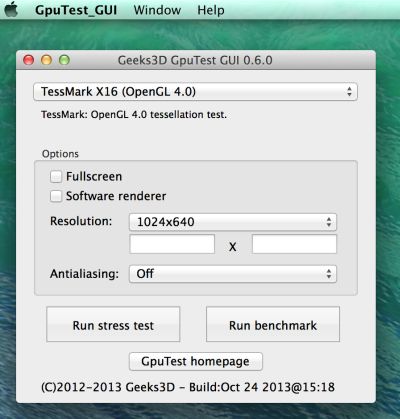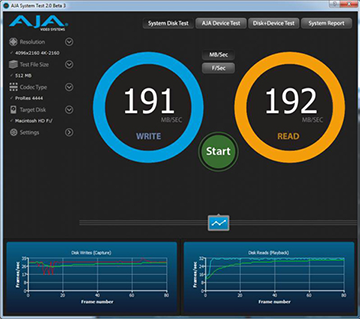


- Web based mac benchmark tool install#
- Web based mac benchmark tool pro#
- Web based mac benchmark tool code#
If you look at the current 2020 macbook pro 16” offerings you’ll see that the 2.3ghz build is more expensive than the 2.6ghx. This was a bottom of the range Mac mini comfortably beating a top of the range Macbook Pro that's just a year old and cost four times as much. Based on my tests, the M1 Macs are incredibly fast for web development, and are an absolute bargain too. Each of them was considerably faster with the Mac mini.Īs I'm using mine as a remote compilation machine I haven't run tests on other apps, but there are plenty of other reviews that have. I tried several other tasks, such as running the gatsby-dev-cli which publishes all gatsby packages to a local npm server, and then installs those in a site for testing. To see the other side of disk IO that most web developers need to do, I checked this by running rm -rf node_modules!
Web based mac benchmark tool install#
One thing I noticed while running it was that the yarn install was noticably faster on the mini, which I put down to faster disk IO. This was run simultaneously on both machines (using iTerm input broadcasting), with both on the same network. It's a generally tough but representative sample. There's even a Gatsby site in there (the gatsby-admin app). Some packages are bundled with microbundle or rollup. Most packages are compiled with Babel, but some are compiled with the TypeScript compiler, and some of the Babel ones have TypeScript types generated. This runs yarn install in the root of the monorepo, then yarn install across all 112 packages, and then yarn prepare which builds each of them and prepares it for publishing. Running lerna bootstrap in a clean gatsby monorepo. If anything, the lead is even more there. While the benchmark seems to be representative of real-world web development tasks, I still needed to compare with my day-to-day tasks. Higher scores are betterĮnter fullscreen mode Exit fullscreen modeĮven via Rosetta the Mac mini is around 25% faster than the Macbook Pro. I ran the benchmarks several times to be sure they weren't outliers. I ran the benchmarks according to the instructions: npm install, npm build then node dist/cli.js. It will be arch64 if it's a native build, and 圆4 if running the Intel version using Rosetta2. I made sure that it was running natively by using the Node REPL to check process.arch. To run the tests, I first installed Node 15.4.0 using Homebrew on the mini and using nvm on the MBP. It can run on the latest Node though, and should still be representative of the relative speeds. The benchmark itself is three years old, and uses old versions of these tools.

This uses Node to run several realistic tasks, using the sort of tools web developers use every day: Babel transpilation, and various other parsers, TypeScript, PostCSS, Prettier, ESLint and more. For my initial tests I used the V8 Web Tooling Benchmark. I ordered the entry level Mac mini with 8GB of RAM, and my comparisons are with my work machine: a Late 2019 16" Macbook Pro 2.3GHz core i9 with 16GB of RAM. This includes benchmarks, but also real world development tasks.

I needn't have worried: the Mac mini M1 comfortably beats my Macbook Pro in every task I threw at it.
Web based mac benchmark tool code#
VS Code remote development is very slick, so when the M1 Macs were released, a Mac mini seemed just the job. We do a lot of a pair programming over Zoom, and that's particularly difficult when compiling. I'm an engineer on the Gatsby open source team, and have to compile the massive monorepo many times a day. I'd been looking for something to use as a headless compilation machine for a while. In the end I decided to risk it and order one and run some benchmarks myself. A lot of the M1's speed comes from specialised cores, so there was a risk that it would not be as fast for web development. However I couldn't find anything testing the web development tools that I use every day, such as Node, Babel and TypeScript. In the weeks after the new Apple Silicon Macs were launched there were plenty of reviews with benchmarks for tasks like video encoding, 3D rendering and so on.


 0 kommentar(er)
0 kommentar(er)
